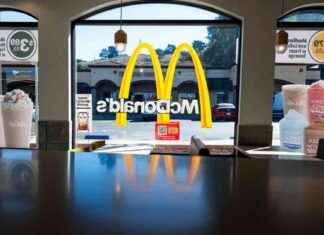Railroad officials are notoriously tight-lipped. But for eight years, the Canadian National Railroad has posted detailed reports about regional freight train movements as a result of purchasing the smaller EJ&E Railroad in 2008. The most recent analysis shows daily freight trains quadrupling on former EJ&E tracks in some North and West suburbs and plummeting by as much as 81 percent on CN tracks since the merger. That means more trains for Barrington and West Chicago, fewer freights for Des Plaines and Buffalo Grove.
CN’s treasure trove of inside information wasn’t voluntary; it’s part of an oversight period ordered by the U.S. Surface Transportation Board. The monitoring ended Jan. 23, but the state of Illinois and Barrington want it extended, contending public safety is at stake.
CN hopes to block that move, saying freight train flow is improved in the region. Some experts think the railroad might succeed.
“Extending the oversight period would send an unwelcome signal to investors that improvements in railroad networks can get bogged down due to federal policy,” DePaul University transportation Professor Joseph Schwieterman said.
The decision is up to the STB, an organization in flux with President Donald Trump due to appoint two new board members this year.
Barrington Village President Karen Darch hopes her arguments will stick in a fluid situation.
“Our town is completely blocked when these long trains, some of them more than 10,000 feet, cross our intersections,” she said. And, “we expect an uptick.”
Here are other notable findings from CN’s November report:
• Delays of 10 minutes or more at crossings totaled 1,245 in November. What slows trains down? Problems include air hose malfunctions, gates not working and difficulties coordinating with other freight traffic.
• Freight trains on the old EJ&E tracks have spiked from about four or five daily to 19 or 20 in communities stretching from Lake Zurich to Barrington and West Chicago.
• But municipalities such as Buffalo Grove and Des Plaines are getting fewer trains. There were 3.6 freights a day in November compared to 19 before the merger as CN moved trains to the EJ&E tracks, which form a semicircle along the North, West and South suburbs.
• Of those delayed trains, the average length on Nov. 1 was 7,421 feet. For November, lengths ranged from less than 2,500 feet to more than 14,000. CN had estimated trains would stretch about 6,300 feet on average.
Barrington and the Illinois Department of Transportation, with support from U.S. Sens. Tammy Duckworth and Dick Durbin, want to extend the oversight period by two years and get CN to chip in for an underpass at Route 14. The underpass will allow ambulances to reach Advocate Good Shepherd Hospital quickly and prevent traffic backing up, Darch said.
“It’s not just for Barrington — an underpass will relieve traffic congestion for the region.”
The freight train increase is no surprise and is below projections on average, the railroad has stated.
CN wants the “unprecedented oversight period” to stay dead. “The CN acquisition removed trains from the busy and vitally important Chicago rail hub improving fluidity of freight in the region,” spokesman Patrick Waldron said.
“CN will continue to outreach to local EJ&E communities.”
Schwieterman thinks “the STB is a wild card due to all the transitional issues at play.”
And the obscure board also will decide the fate of another suburban cause célèbre — a ring road around O’Hare International Airport that is the subject of a throwdown between the Illinois tollway and the Canadian Pacific Railroad.
The agency wants railroad land for bridges supporting a toll road on the western side of O’Hare with interchanges at I-90, I-294 and the Elgin-O’Hare Expressway.
Canadian Pacific has objected, saying giving up land will constrain its operations and cause freight train traffic chaos.
Congressman Dan Lipinski, a Western Springs Democrat and House Transportation Committee member, doesn’t like the tollway’s odds.
“I hate to say this — I want the toll road to get done, it’s very important — but I’m afraid the STB’s statutory bias is in favor of freight rail,” Lipinski said.
Either decision isn’t likely to come soon, he added. And that’s trouble for tollway leaders who asked for a ruling by the end of March to begin construction this fall.
Delays could cost $200,000 a month.
Got an opinion? Drop me an email at mpyke@dailyherald.com.
Our editors found this article on this site using Google and regenerated it for our readers.





